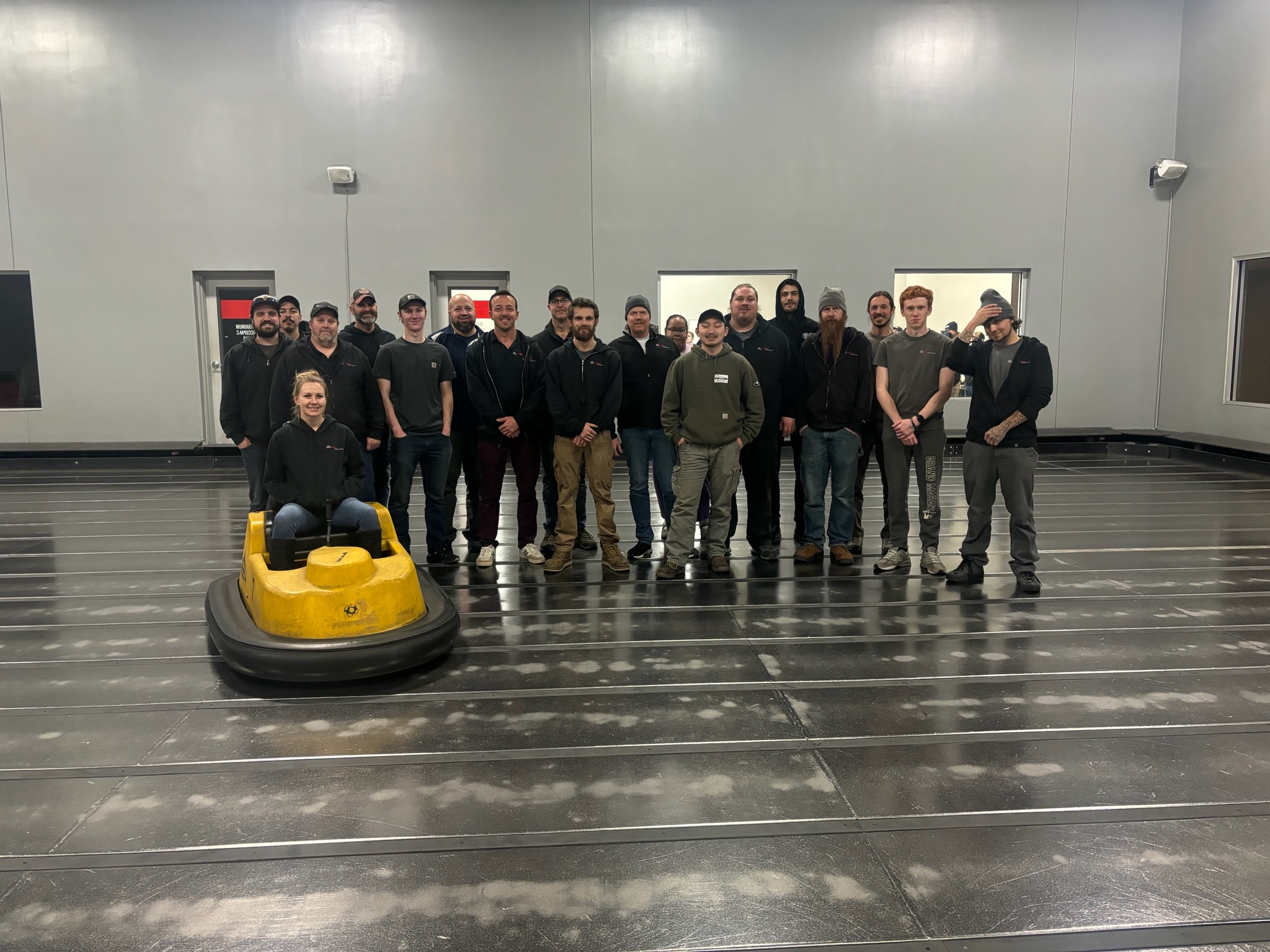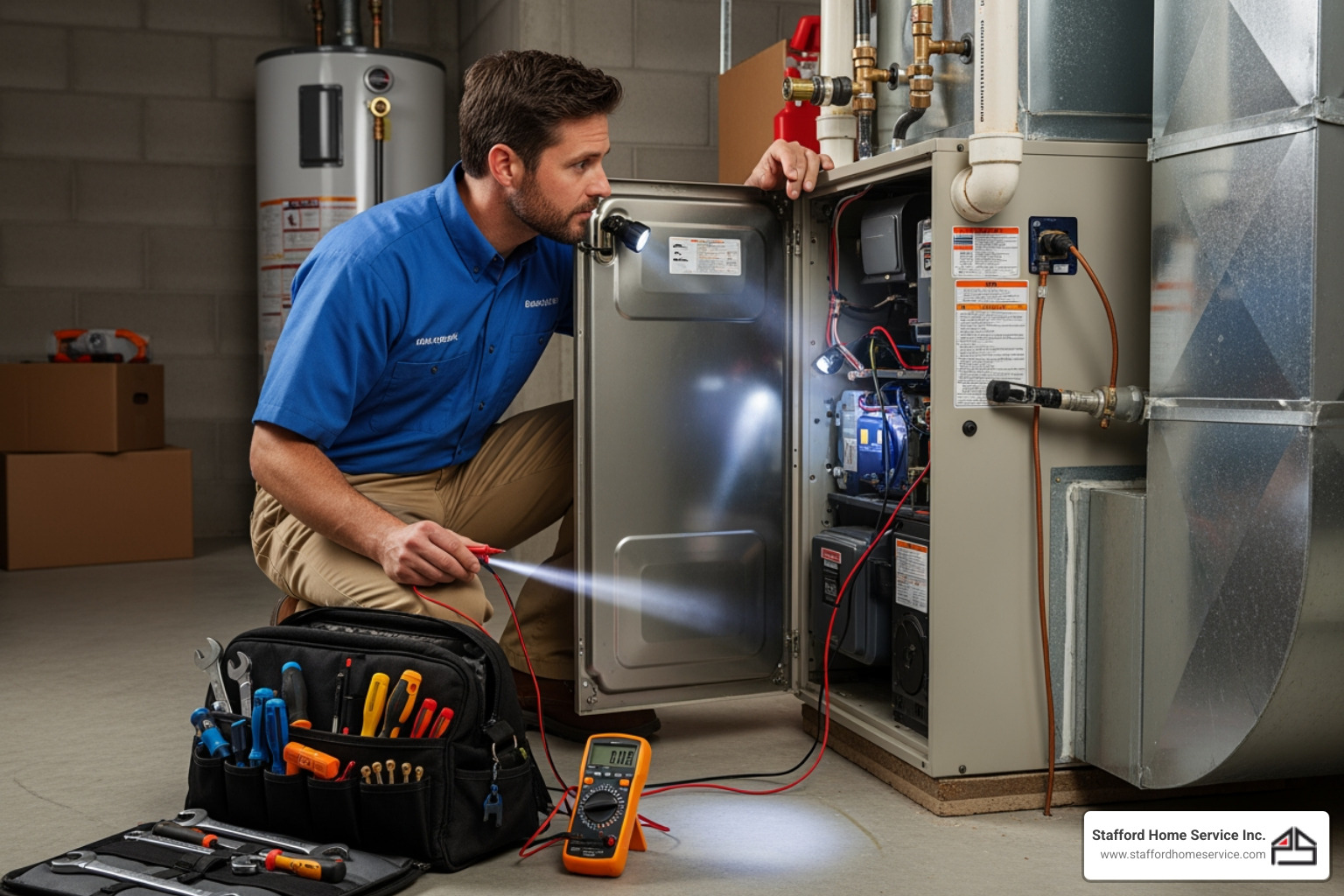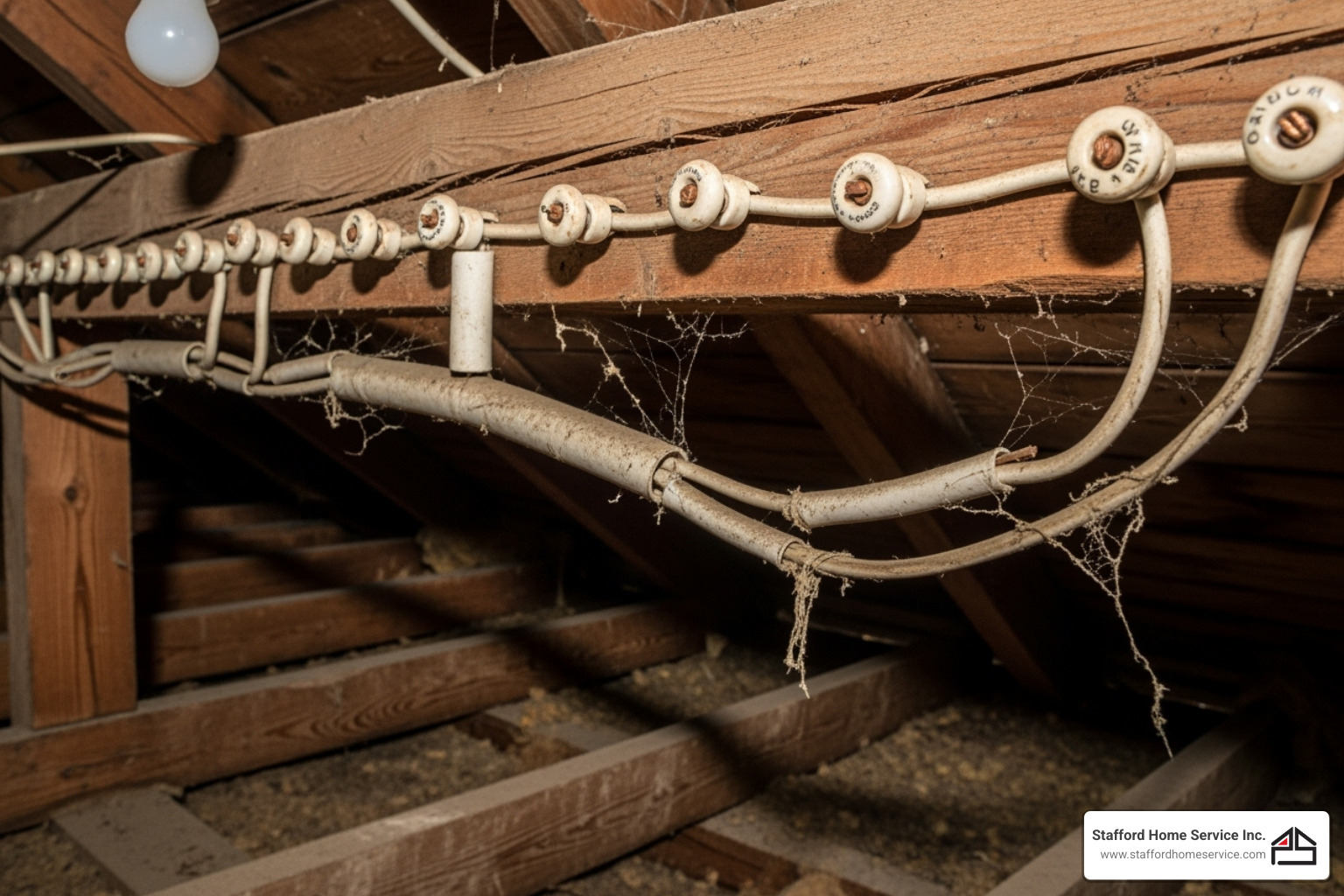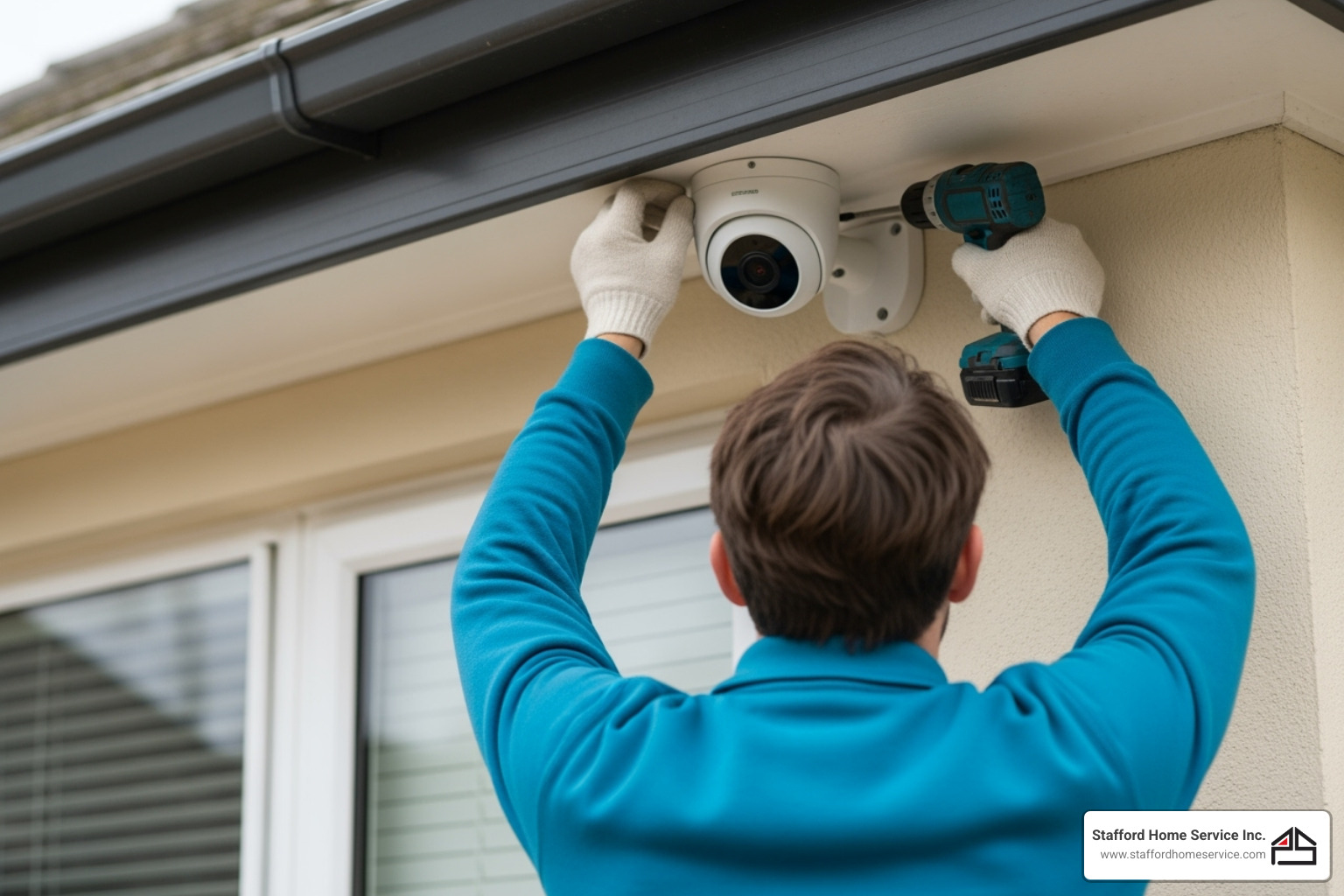Keep Your Cool: Essential Furnace Service & Repair Tips
Why Furnace Service and Repair Matter for Your Home Comfort
Furnace service and repair are essential for keeping your home warm, safe, and energy-efficient. A malfunctioning furnace can lead to discomfort, safety hazards like carbon monoxide leaks, high energy bills, and system failure at the worst possible time.
Quick Answer: Key Reasons You Need Furnace Service and Repair
- Regular maintenance extends your furnace's lifespan and prevents unexpected breakdowns.
- Annual tune-ups improve energy efficiency and lower utility bills.
- Professional repairs address safety risks like carbon monoxide and gas leaks.
- Timely service catches small issues before they become expensive problems.
- Expert technicians ensure your system runs safely and reliably all winter.
Most furnaces run reliably for years, but like any mechanical system, they need proper care. Dust, dirt, and normal wear can cause parts to fail, restrict airflow, and reduce efficiency. Industry standards recommend servicing your furnace at least once a year, ideally in the fall before the heating season begins.
Strange noises, cold spots, or climbing energy bills are all signs your furnace needs attention. Ignoring them can lead to more serious problems, higher repair costs, and dangerous situations. Knowing when to perform basic maintenance and when to call a professional is key to keeping your family comfortable and safe.
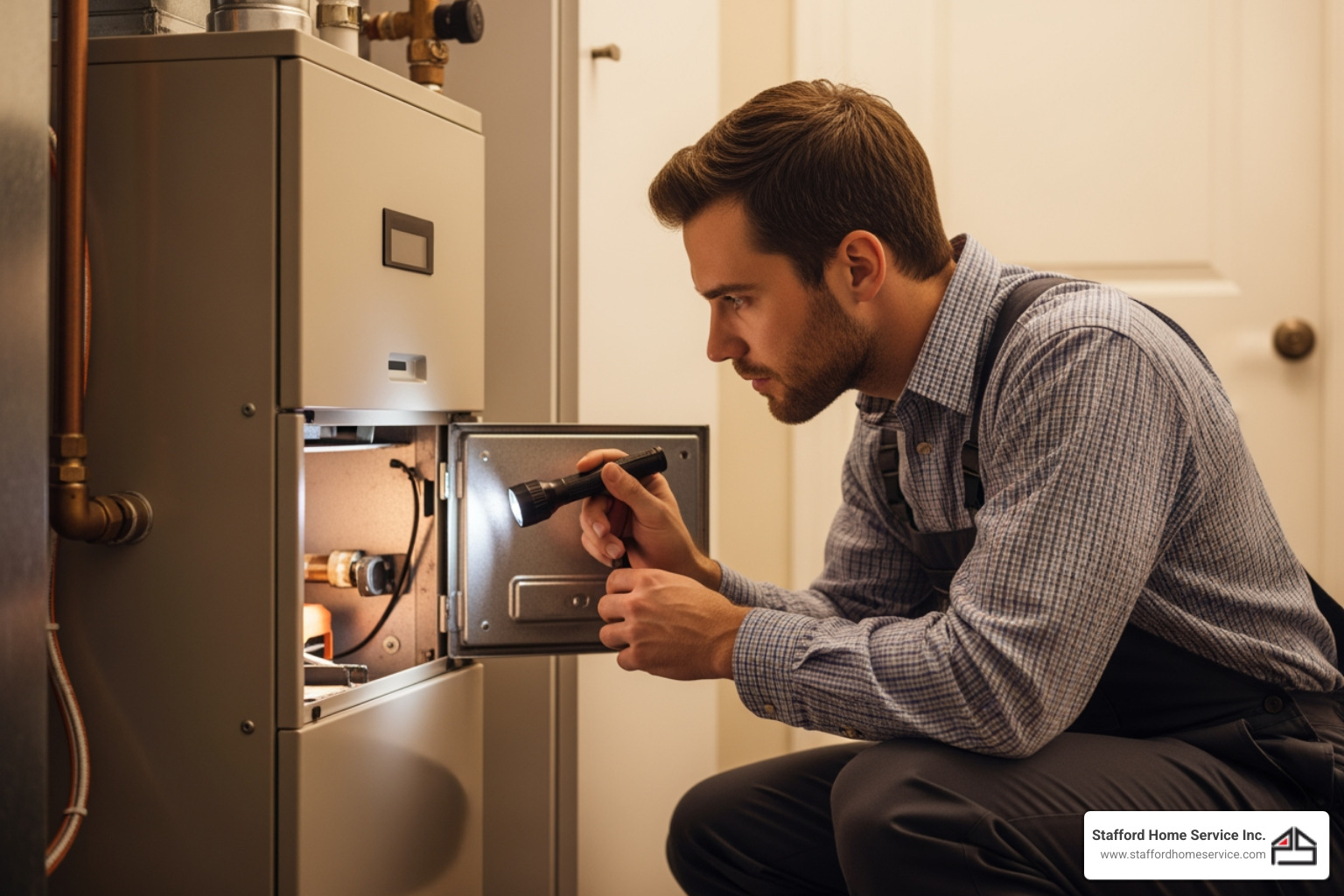
Signs Your Furnace Needs Professional Attention
When something goes wrong with your furnace, it usually provides warning signs. Learning to recognize them can save you from a cold night, a hefty repair bill, or a serious safety issue.

Common Furnace Warning Signs
Knowing what to look and listen for can help you spot trouble early.
Strange noises are a common clue. A healthy furnace hums quietly. Rattling, banging, squealing, or grinding sounds indicate problems like loose parts, a worn blower belt, or failing bearings. Don't ignore these sounds.
Unusual smells are another red flag. A brief dusty smell when you first turn on the furnace is normal, but a lingering burning or metallic odor is not. If you ever smell sulfur or rotten eggs, you may have a gas leak. Turn off your furnace immediately and call for help.
Uneven heating, with some rooms warm and others cold, often means your furnace is struggling to distribute air. This could be due to clogged ducts or a failing blower motor.
Rising energy bills without a change in usage suggest your furnace is working harder than it should. This inefficiency signals an underlying problem that needs professional attention.
Frequent cycling (turning on and off in short bursts) puts unnecessary strain on your system. This "short-cycling" can be caused by a dirty air filter, a failing heat exchanger, or an oversized unit.
For gas furnaces, check the pilot light. It should be a steady, bright blue. A yellow or flickering flame is a warning sign of incomplete combustion, which can produce dangerous carbon monoxide.
If your furnace blows cold or lukewarm air, the cause could be a clogged filter, a broken igniter, or issues with your gas supply.
Finally, poor indoor air quality, such as increased dust or unexplained headaches, could be linked to a malfunctioning furnace that isn't venting properly.
Why You Shouldn't Ignore Furnace Problems
It's tempting to put off dealing with a strange noise or smell, but ignoring furnace problems can lead to serious consequences.
System failure is a major risk. A minor issue today could become a complete breakdown on the coldest night of the year.
More importantly, safety hazards are a real concern. A malfunctioning furnace can cause house fires, gas leaks, and carbon monoxide poisoning. A yellow pilot light indicates a potential carbon monoxide risk that requires immediate attention, as this gas is invisible, odorless, and deadly.
Worsening damage is almost guaranteed if you delay repairs. A small problem can damage other components, turning a simple fix into an expensive overhaul.
Lastly, a struggling furnace leads to reduced efficiency and comfort. It works overtime, driving up utility bills while leaving your home with cold spots and uneven temperatures.
The bottom line is that prompt furnace service and repair is about protecting your family's safety, comfort, and wallet. Catching problems early means smaller repairs, lower costs, and peace of mind.
The Value of Regular Furnace Maintenance
Just like your car needs regular oil changes, your furnace benefits from routine inspections and tune-ups. This preventative care is one of the smartest investments a homeowner can make, protecting your system and your family.

Regular maintenance dramatically improves energy efficiency. A clean, well-tuned furnace uses less fuel, which means lower utility bills. Your furnace will also last longer with proper care, often extending its 15- to 20-year lifespan.
Perhaps most importantly, annual maintenance improves safety. Technicians check for carbon monoxide leaks, inspect gas connections, and test safety controls. These checks can be lifesaving. Additionally, most furnace manufacturers require proof of annual maintenance to maintain warranty compliance, so skipping tune-ups could mean paying for repairs that should have been covered.
What to Expect During a Furnace Tune-Up
Our technicians follow a thorough checklist to ensure every component is in top shape. A comprehensive tune-up includes:
- Inspecting the heat exchanger: We check this critical component for cracks or damage that could allow carbon monoxide to leak into your home.
- Cleaning the burners: This ensures proper, efficient combustion and prevents safety hazards.
- Checking electrical connections: We tighten loose wires and look for corrosion.
- Testing safety controls: We verify that limit switches and other safety devices function correctly.
- Lubricating moving parts: This reduces friction and wear on components like the blower motor.
- Changing the air filter: A simple step that significantly improves airflow and indoor air quality.
- Calibrating the thermostat: This ensures accurate temperature readings and efficient operation.
- Inspecting the gas valve and fuel supply: We check for safe, efficient operation and look for any hidden damage or wear throughout the system.
This comprehensive approach is what separates a real tune-up from a basic inspection.
How Often Should a Furnace Be Serviced?
The answer is simple: at least once a year. This annual maintenance is key to prolonging your system's lifespan while reducing repairs and utility costs.
The best time for service is in the fall, ideally in September or early October. This ensures your system is ready before the first cold snap hits. Proactive furnace service and repair prevents emergency breakdowns and gives you peace of mind that your family will stay warm all season long.
DIY Care vs. Professional Furnace Service and Repair
While it's satisfying to fix things yourself, it's crucial to know the difference between what you can safely handle and what requires professional expertise when it comes to your furnace. This isn't just about doing a good job—it's about safety.

Basic DIY Furnace Maintenance Tasks
There are a few simple tasks you can do to help keep your furnace running smoothly.
- Replacing your air filter is the most important DIY task. A clogged filter makes your system work harder. Check it monthly and replace it at least once per heating season, or more often if you have pets or allergies.
- Keeping your vents clear of furniture, curtains, or rugs ensures proper airflow and prevents cold spots.
- Checking your thermostat settings is also helpful. Ensure it's set to "heat" and the fan is on "auto." Check the batteries as well.
- Performing visual inspections can help you spot obvious issues like debris around the unit or loose panels. If the furnace won't turn on, check for a tripped breaker before calling for help.
If these basic steps don't solve a problem, or if you notice anything concerning like a gas smell, stop and call a professional immediately.
When to Call for Professional Furnace Service and Repair
Most furnace problems require a trained technician with specialized tools. You should always call for professional furnace service and repair for:
- Electrical issues: Faulty wiring, broken igniters, or control board problems require specialized knowledge to handle safely.
- Gas line problems: Any suspected gas leak or issue with the gas valve is a serious safety hazard that demands immediate professional attention.
- Mechanical failures: Problems with the blower motor, heat exchanger, or other internal components need an expert diagnosis.
- Internal component cleaning: Professionals can safely clean critical parts like burners and heat exchangers without causing damage.
If your furnace won't turn on, blows cold air, makes persistent strange noises, or you suspect a carbon monoxide issue, these are clear signals to call for help. The risks of DIY repairs on major malfunctions are not worth it. Our experienced team is committed to quality workmanship and ensuring your family's comfort and safety.
Repair or Replace? Key Factors for Your Decision
Many homeowners face this question when their furnace acts up: should you repair it or replace it? The decision depends on several factors.
The age of your furnace is a major consideration. A repair often makes sense for a system under 10-15 years old. However, once a furnace passes the 15-20 year mark, replacement is often the smarter long-term choice.
Consider repair frequency. If you're calling for furnace service and repair multiple times a season, those costs add up and signal that the unit is wearing out. Also, look at energy efficiency. A new, high-efficiency model may have a higher upfront cost, but the monthly savings on utility bills can be substantial. Finally, safety concerns like a cracked heat exchanger make replacement necessary.
A good rule of thumb: if a repair costs more than half the price of a new system, replacement is usually the better financial choice.
| Factor | Repair | Replace |
|---|---|---|
| Age of Furnace | Typically for newer units (under 10-15 years) | Units 15-20+ years old |
| Repair Frequency | Infrequent, minor issues | Frequent breakdowns, multiple issues annually |
| Energy Efficiency (AFUE) | Maintains current efficiency | Significantly improves efficiency |
| System Performance | Restores original performance | Improves comfort, quieter operation |
| Safety Concerns | Addresses specific safety risks | Eliminates risks associated with old, failing units |
| Future Costs | Lower short-term cost | Higher upfront cost, but lower long-term operating costs |
Signs It's Time for a Furnace Replacement
Sometimes, replacement is the most economical and safest option. Here are the signs:
- Age: If your furnace is over 15-20 years old, it's on borrowed time and is far less efficient than modern models.
- Frequent or major repairs: If repair bills are piling up or a single repair is very expensive, it's time to consider a new unit.
- Rising energy costs: If your bills are climbing without a change in usage, your furnace is likely losing efficiency.
- Uneven heating: Persistent cold spots suggest your furnace can no longer adequately heat your home.
- Excessive noise: Constant rattling or banging can mean multiple internal components are worn out.
- Visible rust or cracks: These are serious safety hazards, especially cracks in the heat exchanger, that necessitate replacement.
Factors in Choosing a New Furnace
If you decide to replace your furnace, consider these factors:
- Energy efficiency ratings (AFUE): The Annual Fuel Utilization Efficiency rating tells you how much fuel becomes heat. Modern high-efficiency furnaces have AFUE ratings of 95% or higher, leading to significant savings. Look for ENERGY STAR® certified models.
- Furnace size and type: The unit must be correctly sized for your home's square footage, insulation, and layout. An oversized furnace wastes energy, while an undersized one will struggle to keep up. We can help determine if a gas, electric, or oil furnace is right for you.
- Climate considerations: Minnesota's harsh winters require a robust heating system that can handle extended cold snaps.
- Professional installation: Proper installation is essential for maximizing efficiency, lifespan, and reliability. It's also often required to maintain your warranty.
Understanding Furnace Safety and Efficiency
Your furnace is a powerful piece of equipment that requires proper care to operate safely and efficiently. When something goes wrong, the consequences can range from uncomfortable to dangerous.

Potential Safety Risks of a Malfunctioning Furnace
Carbon monoxide (CO) poisoning is the most serious risk. This toxic gas is produced when your furnace doesn't burn fuel completely. It's invisible and odorless, with early symptoms like headaches and dizziness that mimic the flu. A healthy gas furnace pilot light burns blue; a yellow or flickering flame may indicate CO production. Ensure you have working CO detectors on every floor.
Natural gas leaks are another hazard. If you smell a "rotten egg" odor, evacuate your home immediately and call your utility company from a safe location. Natural gas is highly flammable.
Other risks include electrical hazards from faulty wiring, which can cause fires, and poor indoor air quality from excess soot produced by an inefficient furnace. This is especially concerning for those with asthma or allergies.
Regular furnace service and repair, including annual safety inspections, can catch these issues before they become dangerous.
How Furnace Efficiency Impacts Your Home
Furnace efficiency affects both your wallet and your comfort. The key metric is the AFUE rating (Annual Fuel Utilization Efficiency). An 80% AFUE rating means 80 cents of every fuel dollar heats your home, while 20 cents is wasted. Modern high-efficiency models have AFUE ratings of 90% or higher, wasting far less fuel.
This improved efficiency directly leads to lower energy bills. If your heating costs are rising, your furnace is likely losing efficiency. Upgrading can cut those bills while improving comfort. A more efficient furnace also has a smaller environmental impact by using less fuel and reducing emissions.
Additionally, incentives and tax credits are often available for upgrading to energy-efficient heating systems. We recommend consulting a tax advisor to see what opportunities may apply to you.
Furnace efficiency is about creating a comfortable, healthy home while saving money and resources. It starts with proper maintenance and knowing when it's time to upgrade.
Your Partner in Home Comfort
We've covered what you need to know to keep your furnace running safely and efficiently, from recognizing warning signs to deciding between repair and replacement. The most important takeaway is that regular furnace service and repair is an essential investment in your home's comfort, safety, and efficiency. Annual maintenance prevents emergencies and gives you peace of mind.
While you can handle simple tasks like changing air filters, complex electrical, gas, and mechanical work should always be left to experienced professionals. Your furnace is too important and potentially dangerous for DIY experiments.
At Stafford Home Service Inc., we've built our reputation on quality workmanship and complete customer satisfaction. Our experienced team serves the Twin Cities area, including Minneapolis and St. Paul. We back our work with the Daikin Comfort Promise and offer financing options to make your home comfort needs more manageable.
Don't wait for a breakdown on the coldest night of the year. If your furnace is making strange noises, your energy bills are climbing, or it's been a while since your last inspection, it's time to take action.
Your family deserves a warm, safe home all season long. Let us help you achieve that comfort.
Customer Testimonials
Our customers consistently praise our knowledgeable technicians, prompt service, and the lasting quality of the work we deliver.
ABOUT STAFFORD HOME SERVICE
In 2007, long-time team members Kris Thompson and Dan Fournier took ownership of Stafford Home Service. With over 60 years of combined expertise in residential electrical and HVAC, they continue the legacy of former owners Curt Cervin and Paul Stafford—delivering quality workmanship and complete customer satisfaction.
70+ Years
Family-operated experience delivering trusted electrical, heating, and cooling services.
800+
Verified 5-star reviews from satisfied customers.
